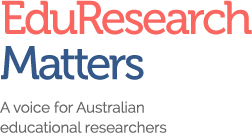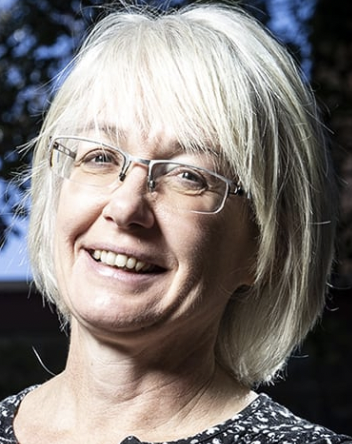Charlotte Jones on why we need to pay attention to the emotional significance climate change has for students, as many young people experiencing legitimate and increasing anxiety as they grapple with climate change. Cristy Clark on the existential threat posed by climate change and why the only ethical thing educators can do is to acknowledge this reality and empower students to play a role in solving the climate crisis.
With the recent release of the Australia State of the Environment report and the IPCC 6th Assessment report, there is mounting evidence that climate change is already having drastic impacts on the planet and will fundamentally change our way of life in the future.

Bringing the crisis into the classroom
Charlotte Jones: Young people are aware of these facts of climate change and are expressing overwhelming concern. Furthermore, young people, like us all, are already living with the dire impacts of climate change such as extreme weather events including 2019/20 Black Summer Fires.
In response, many young people are taking actions – changing consumer choices, striking from school (more recently through online strikes), talking with MPs and taking litigation action.
At the same time there have been growing demands from students, parents and academics, to bring climate change more prominently into education curricula. This presents important opportunities to address existential issues of our time and to prepare young people for climate changed futures.
However, as we bring climate change into the curricula, we need to pay attention to the emotional significance this has for students, with many young people experiencing legitimate and increasing anxiety as they grapple with climate change.
So, what can we learn from young people’s experiences as we bring climate change further into the classroom?
Our research involved talking with young people (18-24 years) about their educational experiences of climate change when they were at school. We asked them to describe, reflect upon and interpret their educational encounters with climate change, and their emotional responses to climate change during schooling, including any ongoing significances of these in their early adulthood. Three key themes emerged.
1. Stripped of power
For many students learning about climate change left them overwhelmed by information and by experiences of limited agency and power. Climate change knowledge was fragmented and divided by disciplinary boundaries. Students were not supported to navigate the boundaries between school and life and were left feeling helpless before this unfolding emergency. The home/school dichotomy was reflective of the public/private dichotomy of emotion, with emotions about the climate crisis, for many, discouraged in formal education spaces by their teachers and peers. While some students sought to maintain this distance, others were paralysed by it.
2. Stranded by the generational gap
Learning about climate change alerted many students to their positions in a system of unequal power. At the time of learning about climate change they couldn’t vote and had limited ability to change their consumer choices or their mode of transport – and yet they learnt that these very actions are powerful tools to respond to climate change. Adults by contrast can undertake these actions and are positioned in our society as protectors and guides. However, for many of these participants learning about climate change sparked feelings of betrayal, as adults failed to fulfil these promised roles. Their security in adults, for many, was lost during these learning experiences as they grappled with a lack of intergenerational climate justice.
3. Daunted by the future
For many, the jarring reality of climate change conflicted with ideals of a stable and secure future. Students felt ill-equipped to cope with the future climatic instability they had just learnt about. Anxiety about instability, and grief for lived and anticipated loss, were deeply felt by many (often in private) and changed how students perceived their personal and global futures. Hope, however, was experienced in various ways – hope in action, in technology, in religion, in humanity – and was experienced in entanglement with other emotions.
Bearing witness to emotions
These experiences present a snapshot of the formative experiences of climate change education and offer key learning for educators as we bring climate change into school curricula. These stories make clear the need for fostering safe and facilitative spaces for young people to respond to learning about climate change through their full range of cognitive, bodily and emotive registers. Young people are beginning to be louder in initiating these spaces and are demanding places for these conversations. Educators, parents, politicians and others need to be active in responding to this need and in creating and fostering spaces alongside young people that give social permission to experience and express emotions about climate change.
Acknowledge and empower
Cristy Clark: There are several important things to remember when talking to university students about the environment. The first is that they are already hyper-aware of their intimate relationship with the environment, and of the ways that climate change is affecting their lives and their futures. The second is that this is an issue that most of them feel very passionate about. Finally, the environment is relevant to every subject we teach.
I teach law, and the environment forms the background to all of the subjects that we engage with. In Property Law, this means that students learn about the role of our property law system in commodifying land and entrenching an extractive approach to the environment, while also learning about First Law and the relational approach to land embedded in the obligations to Country that it recognises. It doesn’t take much for students to note the imperative to decolonise our property law system in the face of the destructive ecological and social impacts of our settler-colonial framework. They have grown up witnessing these impacts and are already open to alternative approaches.
Similarly, I have never seen my human rights law students more passionate than when they worked on the right to a healthy environment. They spoke about living through the horror of the Black Summer Bushfires, as thick acrid smoke filled the air and Canberra became, for a time, the most polluted city on earth. Students were also quick to grasp the link between human rights and the environment – its foundational role in realising the rights to health, life, water and livelihood; and the specific relationship that it shares with the right to culture for Indigenous peoples.
Finally, when studying emerging jurisprudence around so-called ‘rights of nature’, students moved quickly from scepticism to acceptance, as they learned about the wide range of jurisdictions around the world recognising the rights of natural entities, such as rivers. Once again, they were quick to intuitively grasp our interdependence with the environment – that we are part of nature and cannot afford to continue to treat it as a resource that exists solely for our benefit. In this context, the tensions and potential synergies of these developments with First Law raised complex questions around ontologies (the ways we categorise things and the relationships between them) and epistemologies (theories of knowledge), but the students were more than up to the challenge and keen to grapple with these issues.
The environment affects every aspect of our lives and every subject we study, and students are intimately aware of the pressures that it is under and the existential threat posed by climate change. In the face of these realities, the only ethical thing we can do is to acknowledge this reality and empower our students to play a role in solving the climate crisis – whether through law reform, human rights litigation, or in any other profession such as education, science, and health. The very last thing they want is to be expected to passively sit by while those in charge continue to squander their futures.

Charlotte Jones is a social scientist and current PhD Candidate in the School of Geography, Planning, and Spatial Sciences at the University of Tasmania. Her research focusses on the emotional significances for young people, and how this shapes their relationships and orientations towards personal and planetary futures.

Cristy Clark is an Associate Professor of Law in the Faculty of Business, Government and Law at the University of Canberra, Australia. Her research focuses on legal geography, the commons, and the intersection of human rights, neoliberalism, activism and the environment.









![[image with alt-text: A 'tier list' of anti-cheating approaches. Each tier is on a different line. The tiers are as follows. S-tier: Programmatic assessment; Swiss cheese model; Centralised processes; Student amnesty/self-report support. A-tier: Document properties; Stylometrics; Vivas; Staff training; Tasks students want to do. B-tier: Open book; Higher-order learning outcomes; Content-matching; Remote proctoring / lockdown; Better exam design; In-person exams. C-tier: Academic integrity modules; Legislation; Honour codes; Reflective practice. D-tier: Authentic assessment; Site blocking. F-tier: Unsupervised MCQs; Banning essays; Reusing same task.]](https://www.stagingaare.copelandcreative.com.au/wp-content/uploads/2022/07/Dawson-feat-Screen-Shot-2022-07-10-at-7.50.41-pm.png)

















